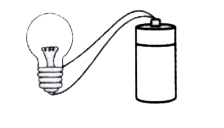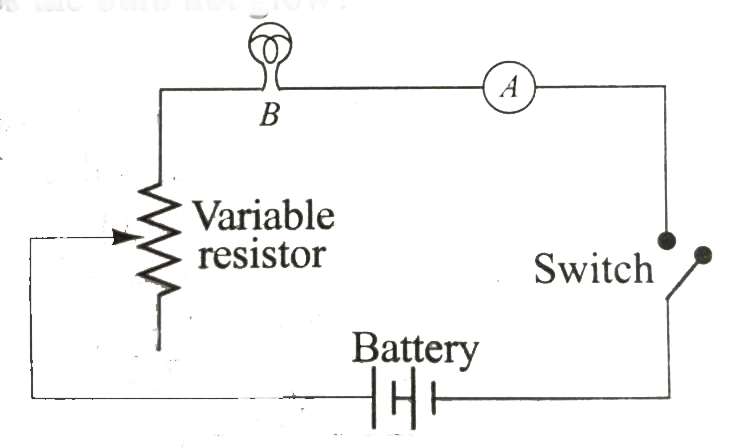When does a bulb glow ?
Step-by-Step Solution:
1. Understanding Electric Current: A bulb glows when electric current passes through it. Electric current is the flow of electric charge, which is typically carried by electrons in a conductor.
2. Closed Circuit Requirement: For a bulb to glow, it must be part of a closed circuit. A closed circuit means that there is a complete path for the electric current to flow. If the circuit is open (broken), the current cannot flow, and the bulb will not glow.
3. Connection to a Power Source: The bulb must be connected to a power source, such as a battery. The battery provides the necessary voltage to push the electric current through the circuit.
4. Chemical Reaction in the Battery: Inside the battery, a chemical reaction occurs that converts chemical energy into electrical energy. This electrical energy is what powers the circuit.
5. Current Flow through the Bulb: Once the circuit is closed and the bulb is connected to the battery, the electric current can flow through the filament of the bulb.
6. Heating of the Filament: As the electric current flows through the filament of the bulb, it encounters resistance, which causes the filament to heat up.
7. Emission of Light: When the filament gets hot enough, it starts to emit light due to incandescence. This is the reason why the bulb glows.
Conclusion: A bulb glows when electric current flows through it, which occurs in a closed circuit connected to a power source, allowing the filament to heat up and emit light.
---
Topper's Solved these Questions
Similar Questions
A wire connected to a bulb does not glow, whereas the filament of the bulb gilows when same current flows through them. Why?
View SolutionB1,B2,B3 are three identical bulbs connected as shown in figure. Ammeters A1,A2,A3 are connected as shown. When all the bulbs glow, the current of 3A is recorded by ammeter A.
(i) What happens to the glow of the other two bulbs when bulb B1 gets fused?
(ii) What happens to the reading of A1,A2,A3 and A when the bulb B2 gets fused?
(iii) How much power is dissipated in the circuit when all the three bulbs glow together?

View Solution
Knowledge Check
In which case does the bulb glow ?
A B
B C
C D
D


In which of the circuits given above does the bulbs glow brighter? (Assume that all bulbs and cells are identical)ACircuit 'a'BCircuit 'b'CCircuit 'c'DButton cells



In which of the circuits given below above does the bulbs glow brighter ? (Assume that all bulbs and cells are identical )ACircuit 'a'BCircuit 'b'CCircuit 'c'DCircuit 'd'
Explain the conditions under which a bulb glows when it is connected by wires to a cell .
View SolutionWe observe the bulb glowing when the switch is 'ON'. Can we conculde that charges instantly move from the 'switch' to the bulb ? Discuss.
View SolutionWe observe the bulb glowing when the switch is 'ON'. Can we conculde that charges instantly move from the 'switch' to the bulb ? Discuss.
View SolutionIn the circuit in Fig. 7.27, bulb B does not glow although ammeter A indicates that the current is flowing . Why does the bulb not glow?

View SolutionIf the wattage of each bulb is 1.5 w , what will be the reading in the ammeter A when all the three bulbs glow simultaneously.

View Solution
